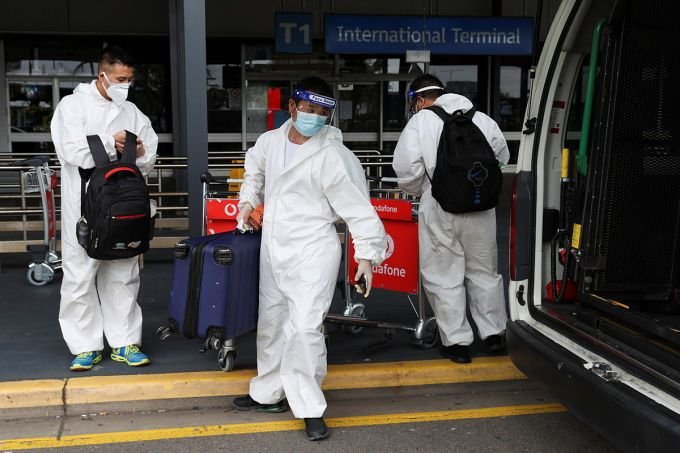
Three hypotheses about the origin of the Omicron strain
Since the Omicron strain appeared, scientists have been rushing to find answers to a series of questions: how does the virus develop, how is it transmitted, and how severe are the symptoms it causes compared to the Delta strain.
The research team also proposed three hypotheses about Omicron’s development.
First, the mutation formed in an area with little viral gene sequencing, and people with limited access to health care services.
In fact, some evolutionary biologists also suggest that the Omicron strain has been present since September and spread for several months.
The Dutch Ministry of Health said on November 30 that the Omicron variant may have appeared in the country at least 10 days before the report from South Africa.
Previously, according to the global database GISAID, the first cases of Omicron infection in South Africa were sampled on November 9, two men in Johannesburg.
Passengers wear protective gear when traveling at Sydney airport, Australia, November 29.
The second hypothesis is that nCoV exists in immunocompromised people (such as HIV patients) for a long time, thereby mutating into Omicron.
When HIV patients use antiretroviral drugs regularly as prescribed, their bodies almost completely suppress pathogens.
`We have reason to believe that some of the variants emerging in South Africa are directly linked to HIV,` said Tulio de Oliveira, principal investigator of the National Genetic Surveillance Network.
The final hypothesis is that nCoV re-infects animal populations, then mutates and infects humans again.
Scientists support this hypothesis based on some characteristics of nCoV.
The World Health Organization (WHO) and medical experts have repeatedly warned that vaccine inequality and the lack of capacity of some countries to respond to epidemics can easily cause many mutations to appear.
Professor Martin’s research team said: `Our new discovery requires more results to conclude which hypothesis is correct.`


